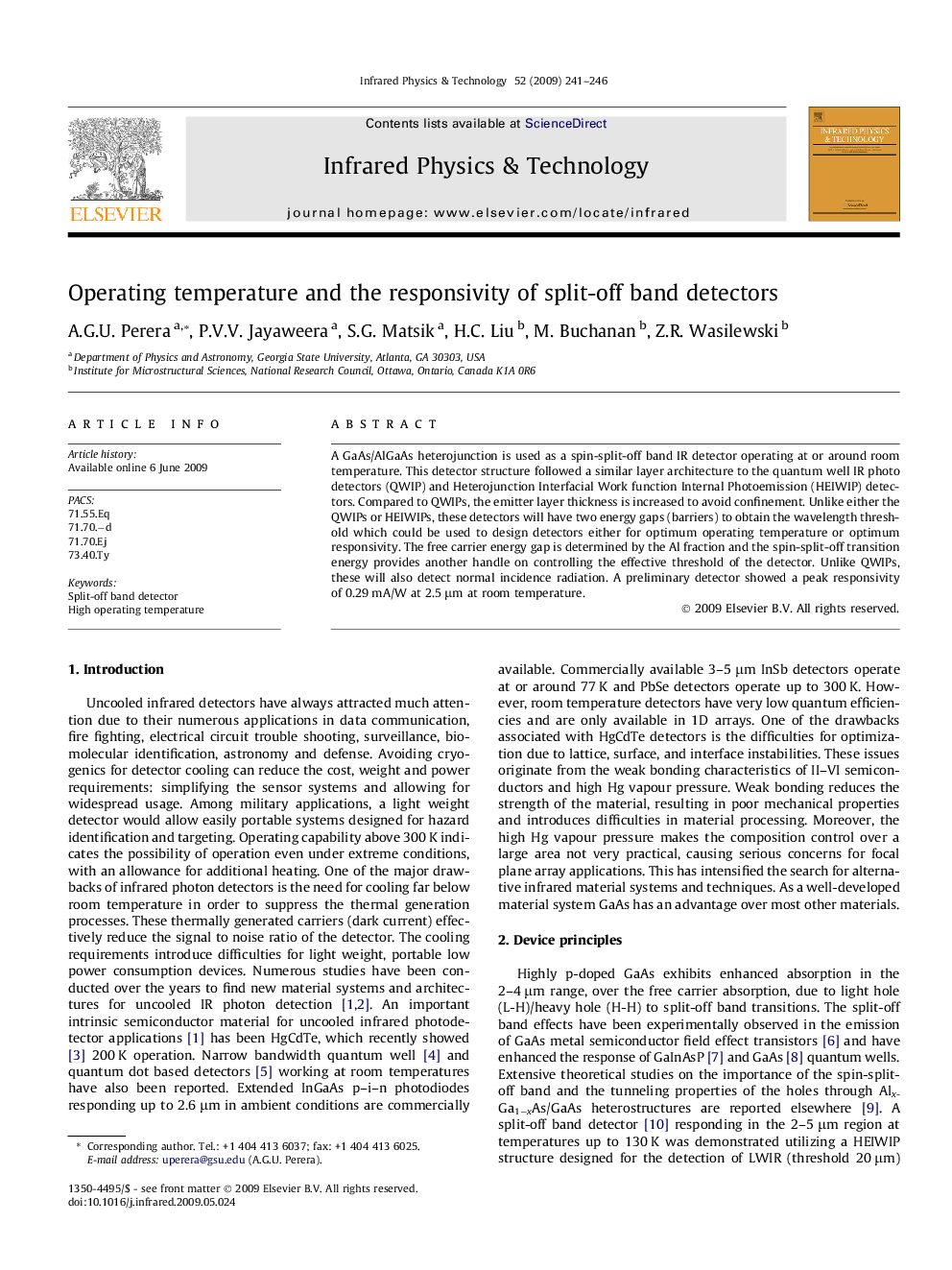| Article ID | Journal | Published Year | Pages | File Type |
|---|---|---|---|---|
| 1785001 | Infrared Physics & Technology | 2009 | 6 Pages |
Abstract
A GaAs/AlGaAs heterojunction is used as a spin-split-off band IR detector operating at or around room temperature. This detector structure followed a similar layer architecture to the quantum well IR photo detectors (QWIP) and Heterojunction Interfacial Work function Internal Photoemission (HEIWIP) detectors. Compared to QWIPs, the emitter layer thickness is increased to avoid confinement. Unlike either the QWIPs or HEIWIPs, these detectors will have two energy gaps (barriers) to obtain the wavelength threshold which could be used to design detectors either for optimum operating temperature or optimum responsivity. The free carrier energy gap is determined by the Al fraction and the spin-split-off transition energy provides another handle on controlling the effective threshold of the detector. Unlike QWIPs, these will also detect normal incidence radiation. A preliminary detector showed a peak responsivity of 0.29 mA/W at 2.5 μm at room temperature.
Related Topics
Physical Sciences and Engineering
Physics and Astronomy
Atomic and Molecular Physics, and Optics
Authors
A.G.U. Perera, P.V.V. Jayaweera, S.G. Matsik, H.C. Liu, M. Buchanan, Z.R. Wasilewski,
